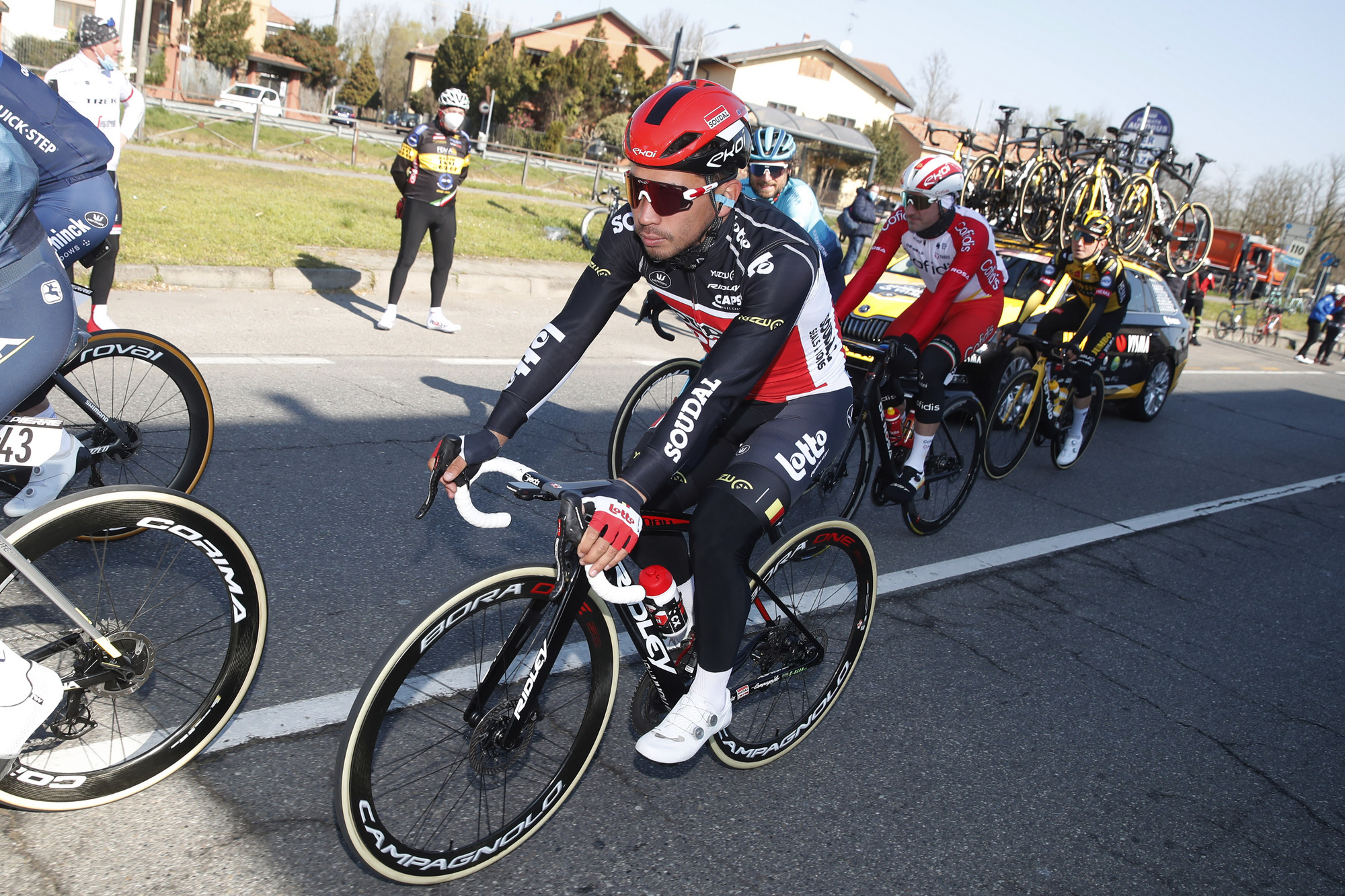Caleb Ewan surprises on Poggio but settles for second at Milan-San Remo
'It would have been nice to have one guy there to keep it together'

A tale of two second places. When Caleb Ewan claimed the sprint behind Vincenzo Nibali at the 2018 Milan-San Remo, it felt almost like a victory. Three years on, a similar scenario provoked rather different sentiments.
On Saturday, Ewan was again the quickest man on the Via Roma, but once again, the Arrivo banner arrived a few metres too soon. Just ahead, late-attacker Jasper Stuyven (Trek-Segafredo) clung on to claim the spoils, while Ewan had to settle for the consolation of outpacing Wout van Aert (Jumbo-Visma) and Peter Sagan (Bora-Hansgrohe) to the second step of the podium.
“The first time I was second I think it was a really good result. It was my second time doing San Remo and that confirmed I could potentially win the race one day,” Ewan said as he waited to mount the podium.
This time? “I’m pretty disappointed this time.”
And yet, it was hard to see what more Ewan could have done. All week, the expectation was that Van Aert, Julian Alaphilippe (Deceuninck-QuickStep) and Mathieu van der Poel (Alpecin-Fenix) would overwhelm all comers on the Poggio.
Ewan, however, surpassed all expectations by placing himself confidently on Van Aert’s wheel for much of the way up the climb. The illness that forced him out of Tirreno-Adriatico prematurely had clearly not hindered his preparation for La Classicissima.
A resident of nearby Monaco, Ewan had trained repeatedly on the Poggio ahead of the race, simulating the kind of surges he might have to resist on the climb. When the other pure sprinters began to flag, he surprisingly still had the strength to track the accelerations, first from Alaphilippe and then from Van Aert.
Get The Leadout Newsletter
The latest race content, interviews, features, reviews and expert buying guides, direct to your inbox!
“I knew coming into the race I was in good form. Like most years, I targeted this race and this year I really tried to improve my climbing, and I’ve even practiced that exact attack on the Poggio many times before this race, and that’s why I knew that in the end if the attacks went there, I should be able to follow,” Ewan said.
“I was in a really good position for the most of the Poggio. When they went, I was obviously suffering a bit, but I still had enough left to follow them, and I was actually quite comfortable.”
Ewan was among a dozen or so riders still in contention at the summit, and he remained well positioned all the way down the descent, where Van Aert and Tom Pidcock (Ineos Grenadiers) led the way.
With no Lotto Soudal teammates for company in the group, however, Ewan was at the mercy of the circumstance, and he had to hope somebody else might close the gap when Stuyven clipped away with 3km remaining.
Van der Poel, Van Aert and Alaphilippe were also without teammates in the front group, and nobody was willing to tow them to the line. Indeed, Søren Kragh Andersen (DSM) took advantage of the general hesitation to bridge across to Stuyven, and that reinforcement helped to ensure the Belgian would stay clear.
Ewan began his sprint just as Stuyven was emerging from behind Andersen’s wheel, but he could already sense that he was racing for second place.
“It would have been nice to have one guy there to keep it together, because I know if that group’s together, then usually I’m the fastest guy there,” Ewan said. “It’s always a lottery in that situation because there’s always going to be attacks. You have to wait. I can’t just go to the front and bring every break back. I have to take the risk and I took the risk. I did what I thought I needed to do to win. In the end, we waited too long.”
Ewan will have to wait another 12 months to go again. This Milan-San Remo victory must never have felt closer or further away.

Barry Ryan was Head of Features at Cyclingnews. He has covered professional cycling since 2010, reporting from the Tour de France, Giro d’Italia and events from Argentina to Japan. His writing has appeared in The Independent, Procycling and Cycling Plus. He is the author of The Ascent: Sean Kelly, Stephen Roche and the Rise of Irish Cycling’s Golden Generation, published by Gill Books.